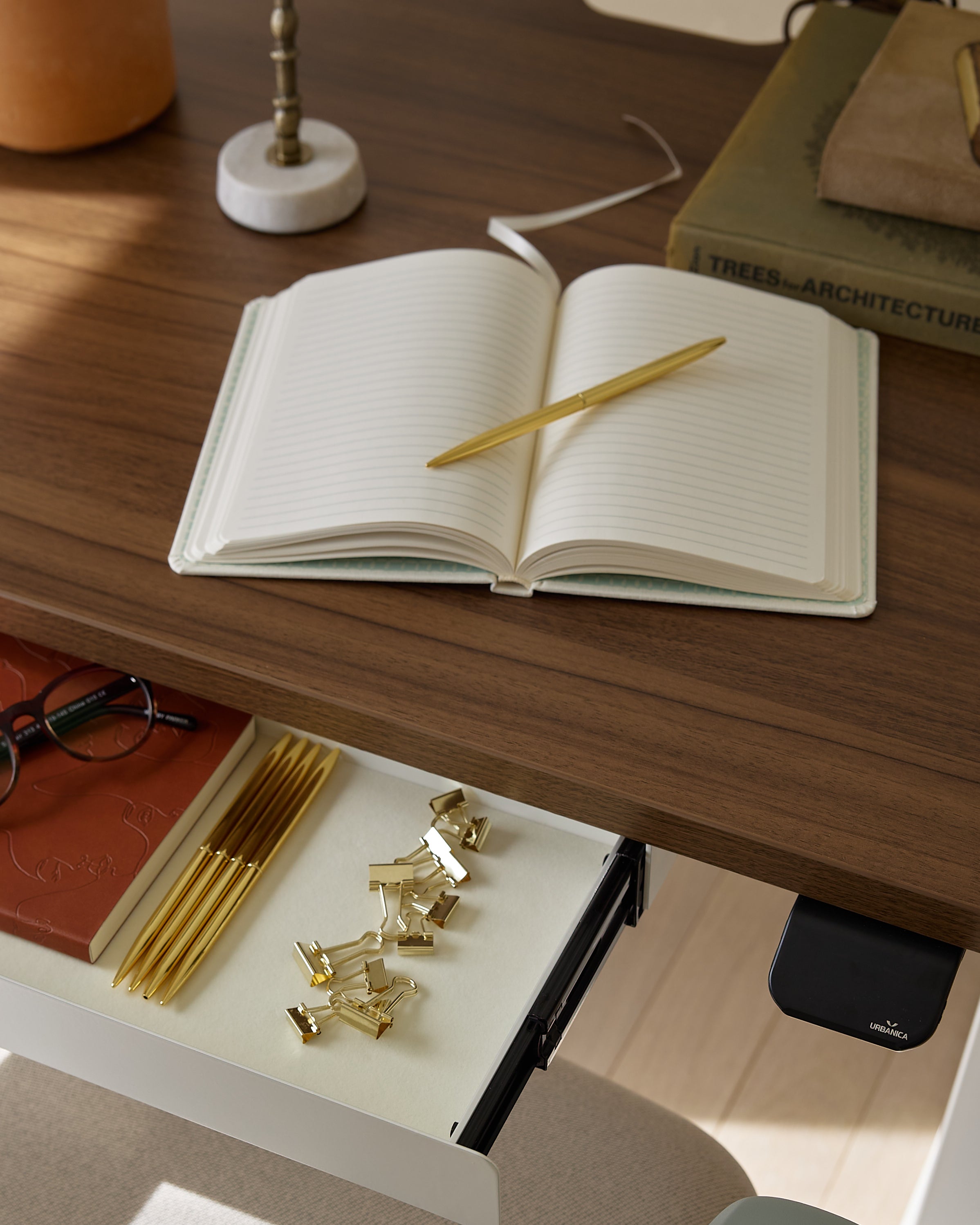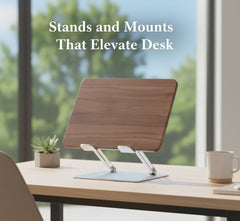Get 10% off your first order
Find the office furniture that’s designed to match your style, comfort, and needs perfectly. Subscribe
Low-Profile Desks Built for Laptop Power Users

Visit quiz page to see how we makes it easy to create an inspiring workplace


Modern living has pushed design innovation toward one central goal: maximizing space without compromising comfort or aesthetics. Furniture mounts have become the quiet revolution behind this shift, transforming both homes and offices into lighter, more versatile environments. These clever systems take advantage of vertical real estate, enhance mobility, and encourage ergonomic well-being while maintaining visual simplicity.
Urban density has created a strong demand for compact interiors where every inch counts. Wall-mounted furniture makes it possible to maintain open floors that visually enlarge a room while preserving functionality. Psychologically, visible floor space contributes to calmness and focus, two qualities often lost in cluttered environments. As smaller apartments become the norm in cities, wall-mounted solutions have evolved from optional upgrades to essential design elements.
Open floor space promotes freedom of movement and simpler upkeep. Floating elements, whether shelves or desks, eliminate obstacles that restrict circulation. For those working from home, a mounted workstation can define a clear zone for productivity without taking over the living area. Designers increasingly favor these features because they enhance both convenience and spatial rhythm.
Mounting is no longer a technical afterthought. It is an architectural choice that brings balance and proportion. Subtle supports, hidden brackets, and weight-bearing wall systems have made it possible for furniture to appear as though it levitates, blending structure with serenity.
A wall-mounted desk eliminates the need for bulky legs, reclaiming valuable square footage. It provides a practical surface for work or study, then folds away when not in use. These designs are ideal for home offices that share space with living areas. Many homeowners discover that freeing up just a few feet of floor can completely change how a room functions.
Safety and reliability depend on secure anchoring. Proper studs, metal brackets, and reinforced wall panels ensure a workstation remains stable even under daily use. Selecting durable materials such as powder-coated steel or laminated hardwood extends the lifespan of mounted furniture. Placement at correct ergonomic height further supports comfort and posture.
The combination of durability, aesthetics, and functionality defines modern workspace furniture. For example, versatile space-saving office desks are designed for compact settings while maintaining full utility. Integrated cable slots, smooth surfaces, and balanced proportions make them suitable for both professional and residential interiors.
A small apartment corner transformed with a fold-down wall desk can become a dedicated workstation. When folded, the wall regains its openness, and the room returns to its multifunctional role without visible clutter.
An adjustable mount allows a user to position their screen at eye level, aligning posture naturally and reducing tension in the shoulders and neck. For individuals who alternate between sitting and standing, this flexibility can reduce fatigue and improve focus.
A height-adjustable mount for compact work setups eliminates the need for multiple tables or bulky risers. Its design supports heat dissipation, maintains device safety, and enables quick transitions between tasks. Even in limited spaces, this adaptability encourages healthier movement patterns.
Mounted laptop stands can work alongside wall arms and monitor supports, keeping screens organized without overcrowding a desk. Thoughtful placement creates an efficient zone where typing, reading, and collaboration feel natural.
Cluttered cables disrupt visual harmony and pose safety concerns. Concealing them through mounting solutions not only enhances aesthetics but also prevents tripping hazards. Efficient cable routing has become an integral part of modern interior planning.
Solutions like discreet under-desk cable management systems neatly secure cords under the work surface. These keep power sources accessible while preserving the illusion of a floating desk. They are particularly effective when paired with height-adjustable or wall-mounted setups.
Cable trays and routing channels can be matched to a desk’s finish for a unified look. Planning for accessibility ensures that maintenance, upgrades, or device replacements remain simple and tidy.
Portable furniture pieces cater to hybrid work lifestyles. Slim stands enable professionals to transform any table into an ergonomic station, then easily store it away. This approach complements multifunctional living spaces that double as creative studios or lounges.
A sleek slim-profile laptop stand typically employs aluminum or other lightweight materials that provide durability without adding bulk. Their minimalist construction aligns perfectly with clean interior aesthetics and promotes versatility.
When not in use, slim stands can fit into drawers or narrow shelves, maintaining a tidy workspace. Some designs even allow stacking or folding, minimizing visual noise while preserving readiness for the next session.
Manufacturers are increasingly developing desks with integrated channels that accommodate arms, screens, and lighting. A built-in design ensures seamless coordination between structure and mount, while add-on systems allow more flexibility for customization.
Reinforced panels and composite supports enhance stability for mounted accessories. A sleek workspace desk with integrated mount channels illustrates how thoughtful construction blends strength with minimalist form.
| Feature | Built-In Mount Desks | Add-On Mount Desks |
|---|---|---|
| Setup Time | Faster | Variable |
| Flexibility | Lower | Higher |
| Visual Integration | Seamless | Customizable |
| Cost | Higher | Moderate |
Each option serves different needs. Built-in desks appeal to users seeking harmony and simplicity, while add-on systems are ideal for evolving setups.
Monitor arms bring adjustability to digital workspaces. Multi-axis motion allows effortless repositioning, supporting natural viewing angles. This prevents strain and allows shared screens during collaboration.
By lifting screens above the surface, ergonomic dual-monitor arm mounts can reclaim up to 40 percent of desk area. Cable channels within the arm structure maintain a clean aesthetic, freeing surfaces for writing or additional tools.
Creative professionals may prefer broader reach and rotation for design tasks, while remote workers often value simple height adjustments. Compatibility with standard VESA mounts ensures flexibility across most devices.
Mounted furniture works best when complemented by mobility-friendly seating. Compact, wheeled chairs enhance spatial flow, especially in tight quarters. Choosing the right proportions ensures that seating does not encroach on open space.
Ergonomic task chairs for fluid mobility provide adaptable height and tilt controls to match various desk and mount heights. This ensures continuous comfort even as workstations shift configuration.
Coordinating finishes between mounted furniture and chairs reinforces design unity. Textured fabrics and light frames can soften the look of metal mounts, creating a balanced visual environment.
Proper mount height keeps eyes aligned with screens, promoting natural posture and reducing the risk of musculoskeletal discomfort. Findings from the CDC Ergonomics Division highlight the importance of workstation adaptability to maintain health during extended use.
Adjustable mounts support micro-movements, which enhance circulation and alleviate stiffness. Maintaining slight variation in posture throughout the day supports focus and long-term wellbeing.
Studies in ergonomics consistently show that optimized setups reduce discomfort and enhance task engagement. Companies adopting flexible mounts often observe improved satisfaction among employees who spend long hours at their desks.
While advanced automation is becoming available, the practical trend focuses on intuitive adjustments and subtle technology. Motion assistance and memory settings are emerging features, but reliability and comfort remain priorities.
Mount manufacturers are adopting eco-conscious materials such as recyclable metals and responsibly sourced wood. Longevity and modularity have become the benchmarks for sustainable furniture innovation.
Rather than relying on futuristic automation, the future of mounting emphasizes continuous improvement in manual precision, versatility, and ease of use. Adaptable components allow people to personalize their workspace layouts while keeping their environments organized and visually balanced.
Furniture mounts represent more than mechanical support; they are the foundation of modern spatial intelligence. Whether used for work, leisure, or hybrid living, their ability to preserve floor space and promote comfort makes them essential to contemporary interiors. Through thoughtful design, proper installation, and ergonomic awareness, mounted furniture creates spaces that are both open and deeply functional—proving that less truly can be more.

Low-Profile Desks Built for Laptop Power Users

Stands and Mounts That Elevate Desk

Table Bases That Won’t Wobble Over Time
Get 10% off your first order
Find the office furniture that’s designed to match your style, comfort, and needs perfectly. Subscribe
Leave a comment